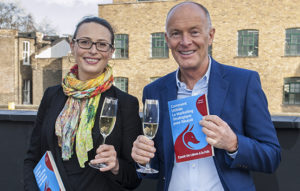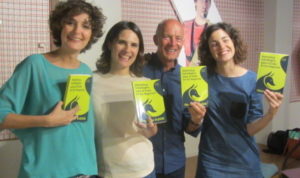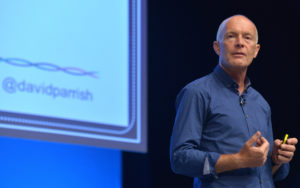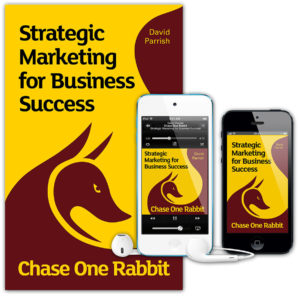This article on marketing authentically is an extract from the marketing book: “Chase One Rabbit: Strategic Marketing for Business Success. 63 Techniques, Tips and Tales for Creative Entrepreneurs”.
Nick was an expert furniture maker. His products were more than furniture – they were works of art. Clearly, his products were not for everybody, but for those people who appreciated his craftsmanship and creativity, they were a delight.
Nick was an introvert and told me that he “couldn’t do marketing”. He was becoming stressed because he needed more customers, but found that direct selling was extremely uncomfortable for him. He was not a natural ‘salesman’ and felt out of place at business networking events. He was embarrassed that his website was not as well designed as it might be, especially because friends kept telling him that he needed a better one. Other friends and associates told him he should use social media more, especially Facebook and Twitter, because these were popular and effective.
Nick felt that marketing wasn’t his strength and he needed help to sell his creations, so he engaged a marketing consultant.
This consultant suggested he rent a shop in the high street. When it turned out that sales were below the levels needed to pay the rent and other costs, the consultant suggested that Nick improve his selling skills by going on a sales training course. He also suggested redesigning his website and using search engine optimisation (SEO) to improve his Google ranking for furniture searches. He also suggested increased use of social media, and advertising in the local newspaper to drive more traffic to his high street store.
Nick found himself spending a lot of money and time on these things. He was exhausted much of the time, but, despite doing as advised, these techniques didn’t generate the sales that the consultant had forecast. Then the consultant said that the problem was that Nick’s prices were too high for the local market. So he advised Nick to make cheaper furniture, to be sold at a lower price. Of course, that meant he’d have to sell more items to make the same profit…
None of this felt right to Nick.
Even though he admitted he wasn’t a marketing expert, Nick began to have doubts about the consultant’s advice. Despite paying substantial consultancy fees, sales were flat and Nick was running out of money fast. It just wasn’t working. He sacked the consultant.
By now Nick was disillusioned with marketing and in despair about his business. In his mind, ‘marketing’ meant the painful process of trying to sell to somebody who simply wasn’t interested. After his encounter with the consultant he concluded that ‘marketing’ meant a bag of tricks, gimmicks and techniques to get people who don’t want your stuff to buy it. None of the advice he had received about these techniques felt right to him. And anyway, none of it had worked. Everything about ‘marketing’ was alien to him.
Nick was at his wit’s end when he turned to me for business advice.
The first thing I did was sit down and ask questions about his business, including about the customers he had sold to so far, and how he had found them. He told me that it was usually by word-of-mouth. For example, he said that the previous weekend he had visited a married couple, who had bought some of his furniture and subsequently become friends. He had called in on them for a cup of coffee and a chat. By coincidence, they had visitors with them for a few days, some friends from another part of the country. These friends of his friends were interested in his work and very much appreciated his creativity. They asked him about his inspiration, the materials he used, his techniques, and his workshop. Nick responded enthusiastically, telling them about every aspect of his creative endeavours. He was in his element. He wasn’t ‘marketing’; he wasn’t trying to sell anything. He was merely talking about his passion to people who were ‘on the same wavelength’. By the time he had left the house the visiting couple had commissioned him to make two pieces of furniture for them. They were expensive items but they paid 50% upfront. I smiled wryly when he told me he was ‘no good at marketing’.
Actually, he communicates brilliantly, authentically and enthusiastically when connected with the right customers, so much so that he doesn’t feel he is selling at all.
As a result of my conversation with Nick, my marketing advice was very different from that of the previous consultant.
Nick’s fundamental problem was that in his high street shop he was trying to sell to the wrong kind of customers. Most people want to buy inexpensive functional furniture, not expensive works of art. The problem was not a lack of sales skills, or the absence of advertising or the under-use of social media. None of these things work if you are using them to try to sell to the wrong kind of customer. The first consultant didn’t consider selecting the right customers, so he was part of the problem, not part of the solution.
If the strategy – that is, the focus on the correct type of customer – is wrong, then it will make no difference what techniques are employed. Identifying the correct customer is always the first step.
The first marketing consultant was focusing only on operational marketing, or marketing communications, not at all on marketing strategy. He was looking at techniques, not asking the wider question, ‘who will buy this furniture?’ He was trying to use (operational) marketing techniques to sell to the wrong kind of customers. Smart marketing is about selecting the right kind of customers first. I focus on strategic marketing first, only later on marketing communications.
As a strategic marketing consultant, my approach would not be to send him on a sales training course, so that he could sell to uninterested people. I would not advise him to try to sell to the general public in the high street. Neither would I suggest he advertises in the local newspaper to attract customers to his shop. I certainly would not advise him to drop his prices to fit the expectations of the general public.
My task was to work with Nick to devise a marketing strategy that worked for his business. My job was to help him use marketing in a way that was consistent with his objectives and values.
Our strategy involved identifying the correct market for his products – identifying the type of person who would be excited to buy his furniture. The strategy was to put Nick in front of the right kind of potential customers and allow him to be his authentic self.
Selling should not be painful. If selling is difficult, then perhaps that’s an indication that we’re dealing with the wrong kind of customers. In contrast, when we are connected to the right kind of customers, marketing communication is easy. If we get the strategy right, selling becomes superfluous.
Using his marketing strategy Nick found people who shared his values and enthusiasm. This strategy wasn’t only about Nick’s personal style, his creative passion and his business values. It was also the correct formula for appropriate, cost-effective, and successful marketing. It was his formula for business success.
For Nick, it is important that he is his authentic self. This is not just good for Nick; it’s good for his business. We should be true to ourselves, honest with customers, and in harmony with our values and passions. These are not just nice bonuses to attach to our business lives; they are part and parcel of being a successful entrepreneur. I wanted to ensure people were not buying just great furniture, but great furniture made by Nick. He was part of the product.
Nick used my strategic marketing advice to realign his creative products with the right kind of customers – he decided not to try to sell to the general public on the high street and closed his shop. He followed word of mouth recommendations and found that he had a small number of highly profitable ‘super fans’ who bought his furniture from him at full price, again and again. He now works only with customers who are in harmony with his creativity, values and pricing. Nick is a successful creative entrepreneur.
This true story of the two consultants illustrates nicely two very different approaches to marketing.
The first is to use a ‘bag of tricks’ to try and sell to the wrong kind of customers; the second is about finding the right kind of customers, who fit with your business and don’t need to be ‘sold to’. The first adviser was a consultant in marketing communications; the second a consultant in strategic marketing.
Decide for yourself which kind of marketing can best help you to become even more successful.
Key Points
Being authentic in business means being yourself and being ‘in your element’. Strategic marketing is about finding customers who are on your wavelength – then selling to them is easy and natural, not a painful process.
What to do next
Review past and current customers and identify the ones with whom you are on the same wavelength. With which customers and in which situations are you ‘in your element’? Use this approach as a compass to find the right kind of customers.
Write down, in priority order, customers you are most in tune with. Identify their key characteristics to help identify more customers of the same type.
Watch the video of David Parrish talking about marketing authentically. More videos are on YouTube.
This is an extract from David’s marketing book ‘Chase One Rabbit: Strategic Marketing for Business Success. 63 Tips, Techniques and Tales for Creative Entrepreneurs’.
Read this and 62 more inspiring and practical marketing techniques on your smartphone by downloading this strategic marketing book as an eBook. It is also available as a paperback and as an Audiobook. This highly-acclaimed marketing book is also available in Spanish and French.
David Parrish is a marketing speaker, author and consultant. He works worldwide helping businesses to become even more successful by using the best strategic marketing techniques.


David Parrish is an international keynote speaker and author on marketing. He makes speeches and presentations on marketing authentically and other marketing strategies and techniques.
He works world-wide as a marketing speaker and consultant, advising creative businesses, digital enterprises, cultural organisations and other enterprises on their marketing strategies and marketing authentically. David has a track record in helping businesses to make their marketing strategies more successful by providing marketing advice that is in tune with clients’ values and objectives. He works in partnership with his clients to devise winning marketing strategies and action plans that deliver successful results. Marketing authentically is often an important part of a strategy devised with a business using David as their marketing consultant.
David Parrish shares his marketing expertise through his marketing keynote speeches and presentations, interactive training workshops, books and business advice consultancy with individual clients worldwide. He applies marketing authentically in his strategy for his own international business.
“David helped us to devise a marketing strategy which focuses on our competitive strengths and the best market segments. Using effective marketing techniques we have improved the way we connect our creative talents with profitable markets.”
– Janina Gaudin. Director. Pepperbot Studios Ltd. New Zealand
Read more testimonials from David’s clients around the world.

